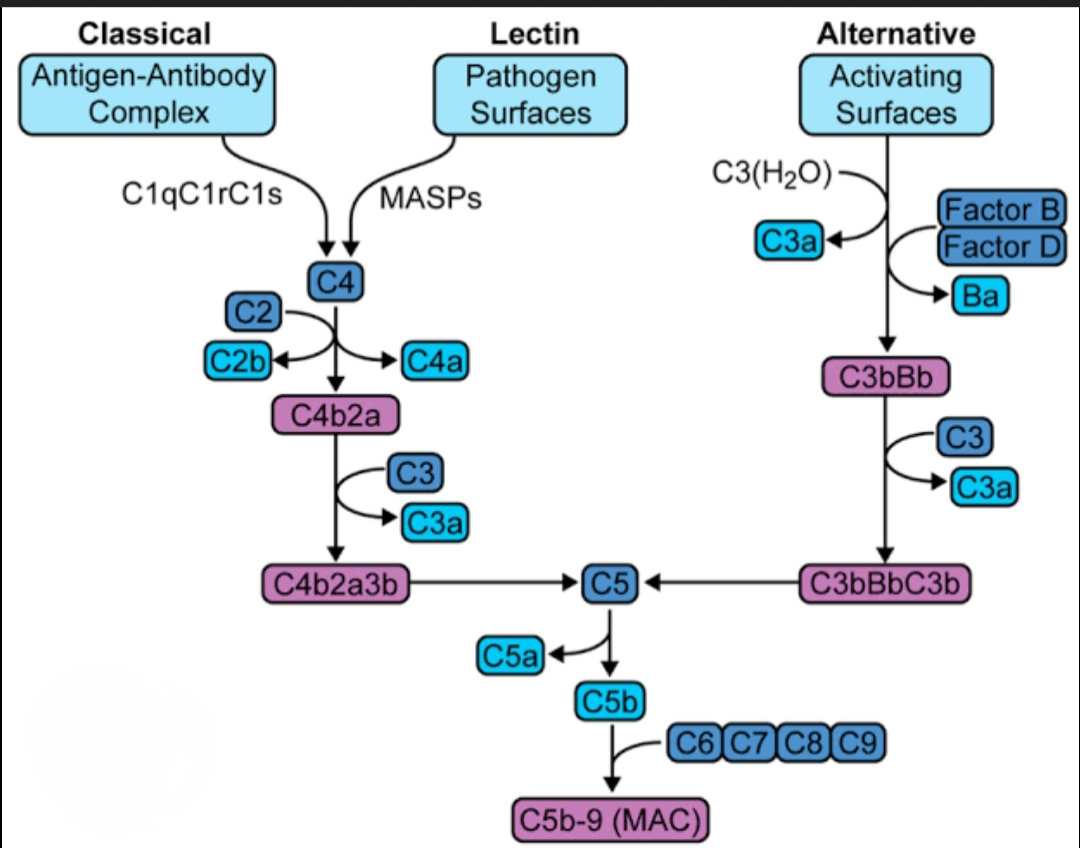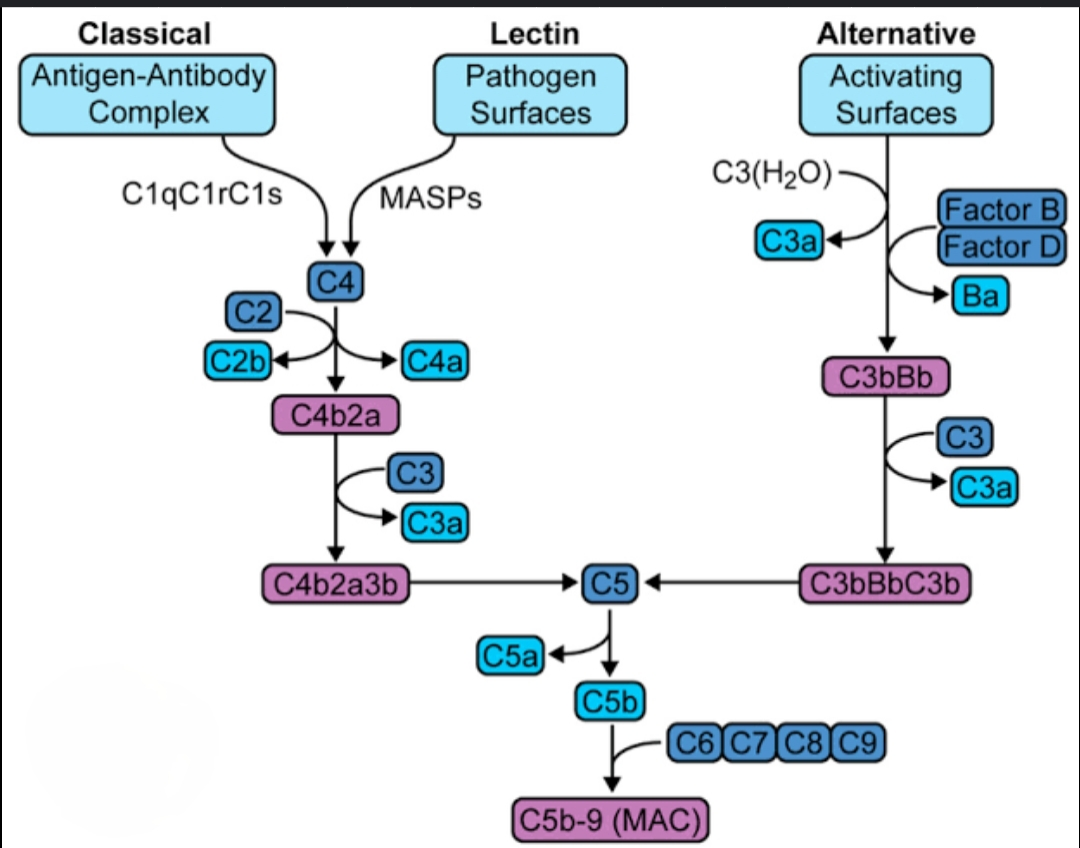C' Pathways
1/11
There's no tags or description
Looks like no tags are added yet.
Name | Mastery | Learn | Test | Matching | Spaced |
|---|
No study sessions yet.
12 Terms
3 steps of classical pathway
Recognition
Activation
Membrane attack complex
Classical pathway recognition (2)
C' protein needs to react with 2 Ab molecules in the Fc receptor (theme of cross-linking)
C1q binds Fc receptors of Ab molecules that are bound to a foreign substance. This changes the conformation of C1r to activate C1s
Classical pathway activation (9)
Activated C1s cleaves C4
Now, Ca and C4b (b stays at the site and a goes away)
C4b deposit at Ag site
C2 comes along and is cleaved by C1s
Now, C4b2a formed (C3 convertase! Can have different components)
C3 convertase goes after C3 (most abundant protein) → hydrolyzed → C3a, and C3b
C3b added to C3 convertase → now C5 convertase (C4b2a3b)
C5 convertase goes after C5, splits them → C5a and C5b
C5b inserts into the membrane of Ag/microbe
DRAW OUT?

Classical pathway membrane attack complex (2)(1)
6,7.8,9 add to that to form the membrane attack complex
Complex works the same way in the alternative pathway
Angstrom (pore) formed
Lectin (MBL) uses
uses mannose/carb
Does NOT require Ab
Lectin (MBL) is big in
Big in neonates
MASPs
Take on the role of C1r and C1S
(Other components take on the role of C1q)
When mannose/ carb bound, what happens
it starts building C3 convertase, which can hydrolyze (cleave)
Same format as classical, just no Ab needed like classical
Alternative pathway is good for
Neonates
What is needed for alternative pathway?
No Ab needed
Just Ag and functional c' needed
3 unique molecules in alternative pathway
properdin (P)
factor B (Bb)
Factor D
Alternative pathway steps (9)
C3 can be hydrolyzed by water here, C3b - binds to Ag -the recipient of factor B (can grab/bind)
Factor D cleaves factor B. Factor D is not common in the serum-regulatory mechanism
Forms Bb
C3bBb is the C3 convertase in this system
Properdin comes in to stabilize C3 convertase
СЗbВbР → СЗbВbРЗb C5 convertase
Initially cleaves C5 into C5a and C5b
C5b adds itself to Ag
Sticks with 6,7,8,9 that are added → membrane attack complex
DRAW OUT
